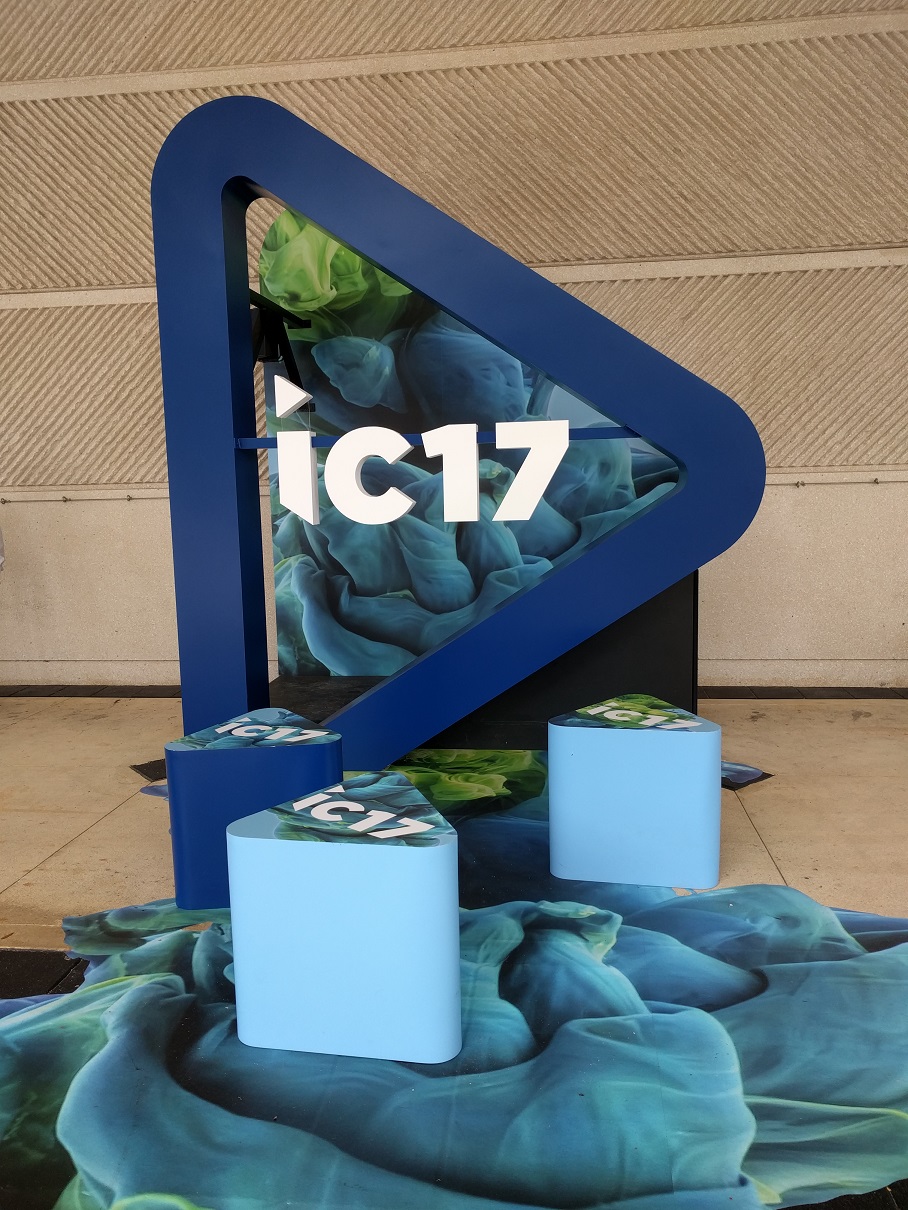EZCast attended InfoComm 2017 in Orlando, Florida, and showed the world what EZCast can bring to revolutionise the wireless display industry.
While we were surrounded by all the latest audio and visual equipment and technologies, we also want to share with you some of the best and eye-catching technologies at the exhibition.
Breakfast’s sentimental take on modern display technology
It has been a little over a decade since flip disc technology was widely used in large banners. Gone were the days when massive flight schedule displays used flip disc technology to flip through the letters and numbers to inform and hurry weary travelers, or have they?
Breakfast built a large flip-disc display linked to a camera to display the content of the camera in realtime, coupled with the unique sounds of the flipping discs.
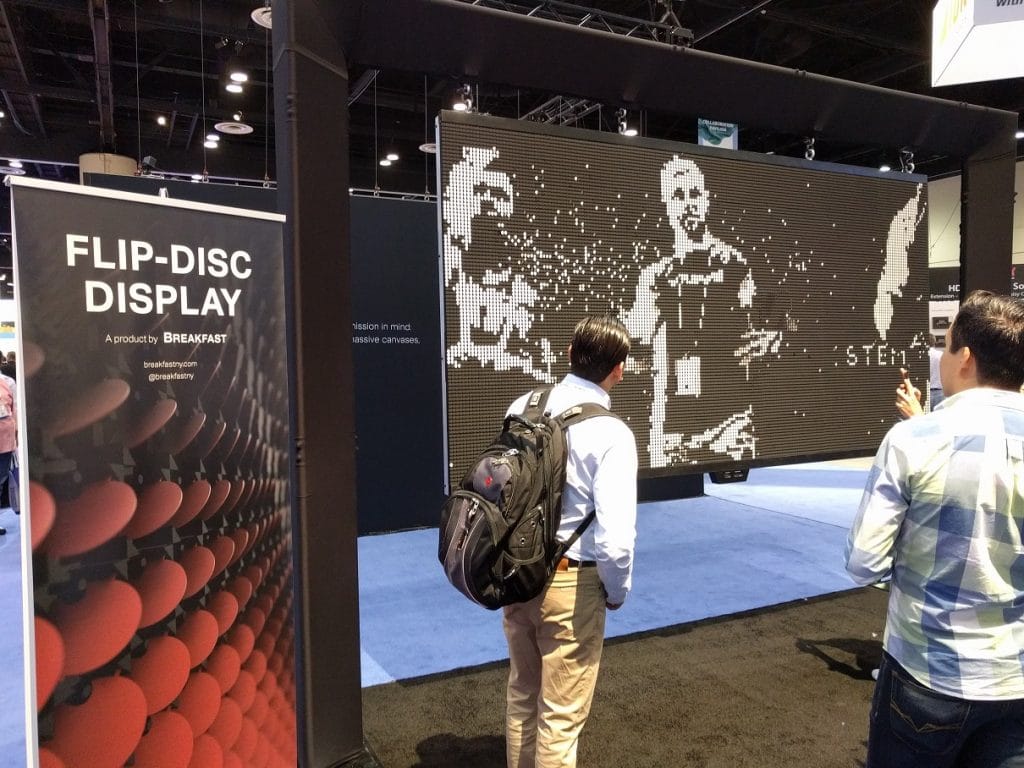
The black and white display drew an influx of visitors, surely enamoured by the sentimentality of it all, and with most pleasantly surprised to see oneself visualised in two-tone, pixelated glory.
With Breakfast’s exhibition, we hope the lovable flip-disc technology can make a comeback and be as popular, in the right applications, as its manufacturer’s namesake.
Canon’s immersive hemispherical projector
Canon put on a show of its vast projector technologies, from 4K laser projectors, spherical projectors to a hemispherical projection area called the Planetarium.

The Planetarium was constructed using Canon’s latest REALiS 4K600STZ projector technology. A peek inside the Planetarium showed a vertically installed projector with vivid and immersive colours splashed across the inside of the dome.
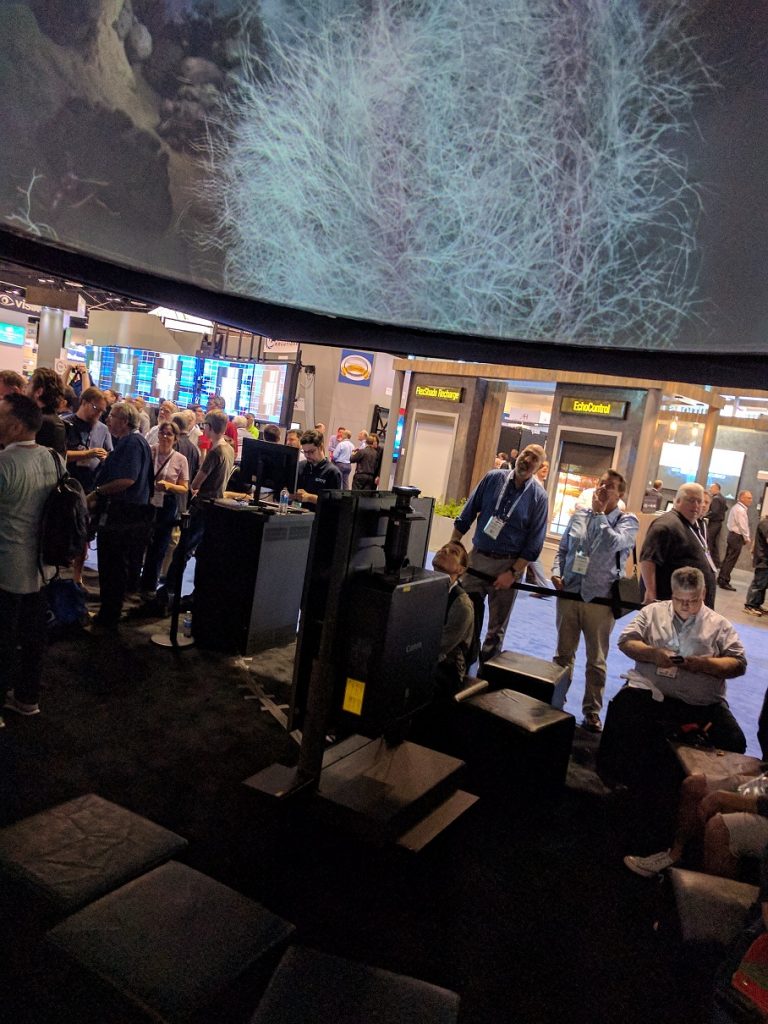
The vibrant colours inside the dome shows the projector will be a valuable addition to most science museums around the world.
EZCast bringing 4K to WiFi projection in meetings
EZCast has released the EZCast 4K, world’s first 4K screen mirroring dongle, to the consumer market for a few months now, and is following that with a 4K product in the commercial space with Quattro.
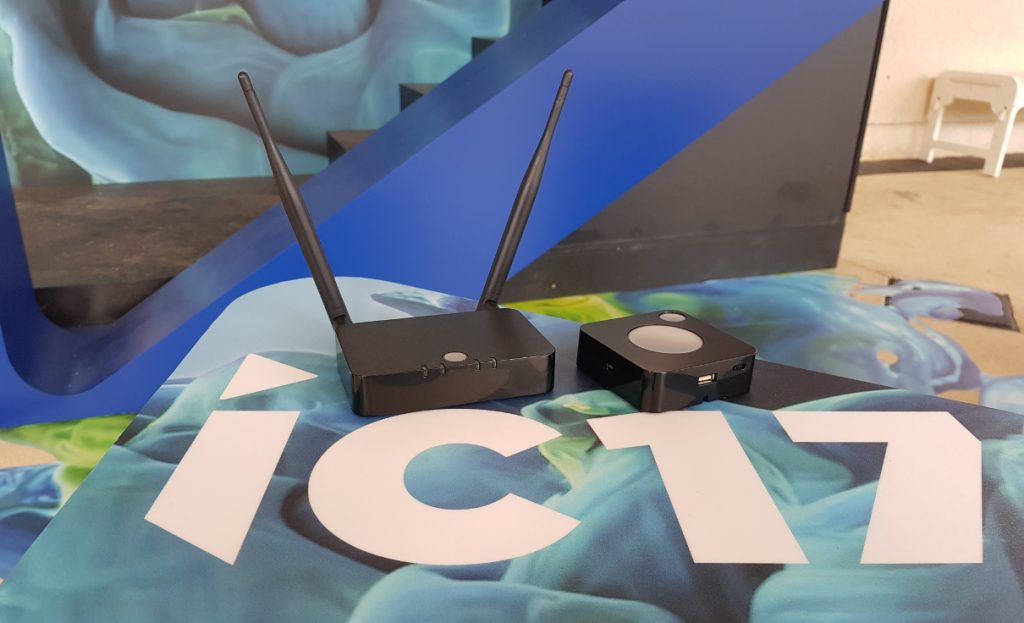
EZCast exhibited QuattroPod during the show as the heart of meeting rooms for the future. QuattroPod would work by creating a direct WiFi link between the transmitter and receiver, and both smart phones and laptops can project via the direct WiFi link. This has the advantage, especially for guests, of not requiring the permission of local WiFi networks, making wireless presentations more secure and flexible.
Additional feature of QuattroPod include plug-and-play and no installation required by the presenter, to make WiFi screen mirroring as simple as ever.
LG’s curved OLED tiling display to revolutionize pop-up advertising
As a world leader in OLED displays, LG has demonstrated their ability to innovate displays in all sorts of applications.
The latest dual-view curved tiling OLED signage allows customers to create customised curve displays using modular slim tiles. Each tile is a 65 in portrait display in Ultra HD resolution (3840 x 2160), with under 9 mm in thickness. The screens are also viewable from both sides, adding to a new layer of flexibility in implementation.
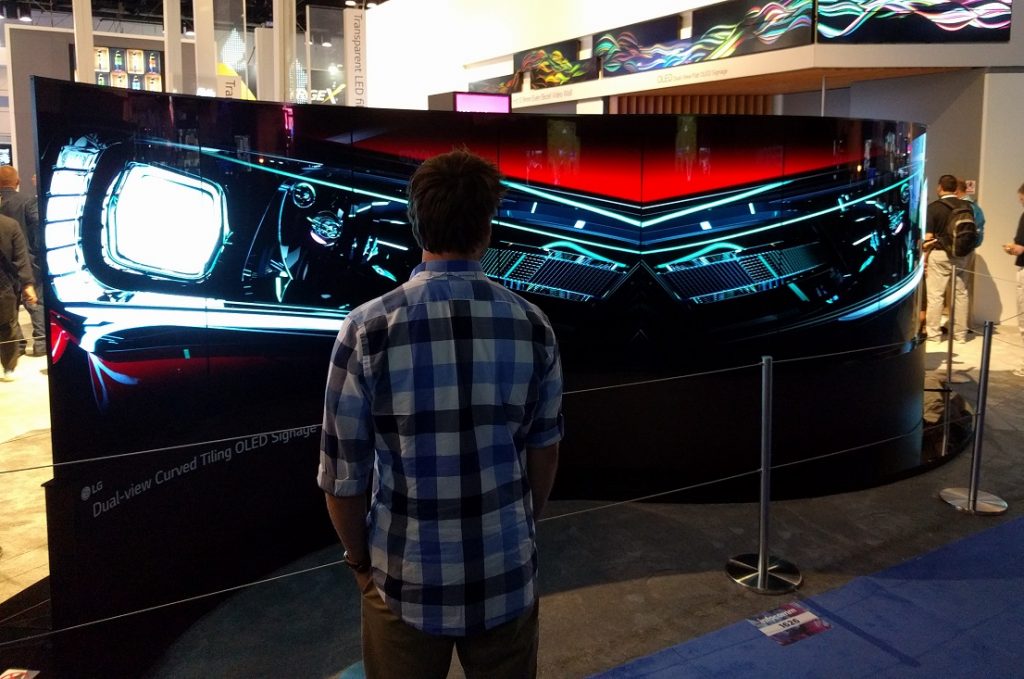
LG’s setup at the show was an obvious shout-out to the automotive industry, and we have high hopes of seeing more of these displays in pop-up advertising stands for cars in the near future.
The most modular short-throw projector on the market by Optoma
Optoma technology prides itself as a leader in projector technologies, and their exhibit at InfoComm continued to build on their creativity and innovation in the projection space.
By installing 4 short-throw, 1080p full HD projectors side-by-side, Optoma was able to demonstrate a modular and scalable projector platform that stretched 23 feet in width.
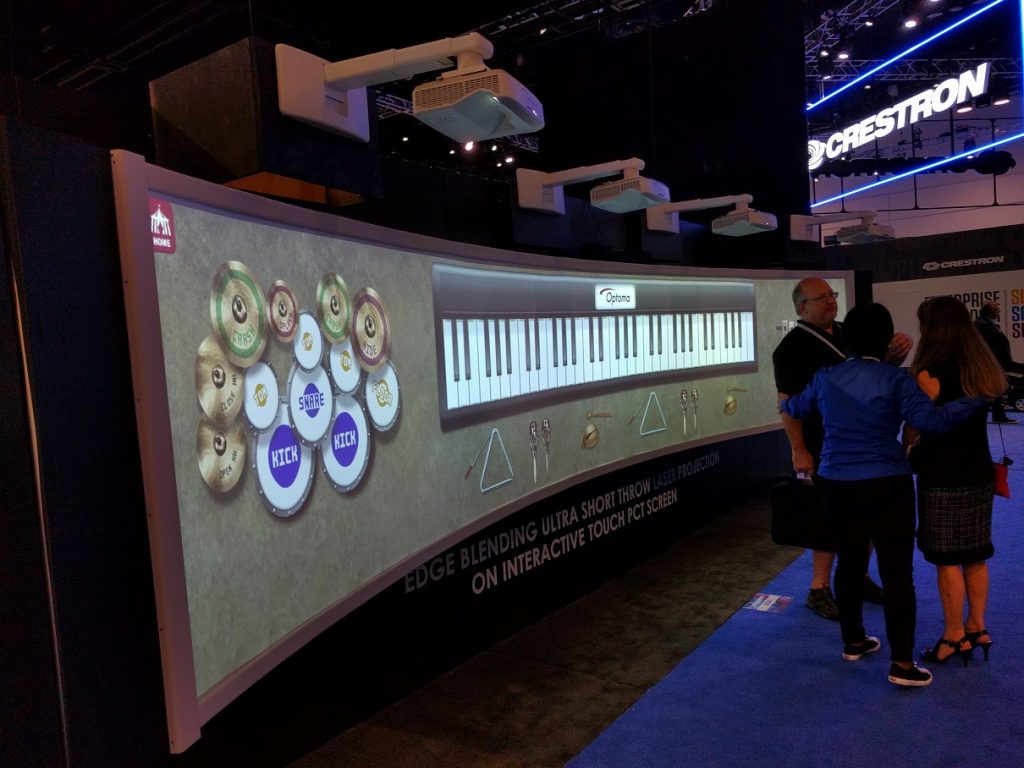
The combination of a PCT touchscreen beneath the image resulted in one of the best interactive large displays on the market.
Samsung’s jigsaw-like QLED displays
QLED, a form of quantum dot technology, is Samsung’s answer to LG’s OLED displays.The QLED monitors come in both 55” and 65” sizes, and both boast the Ultra HD resolution (3840 x 2160). They can be combined like jigsaw puzzles to create customised billboard designs.
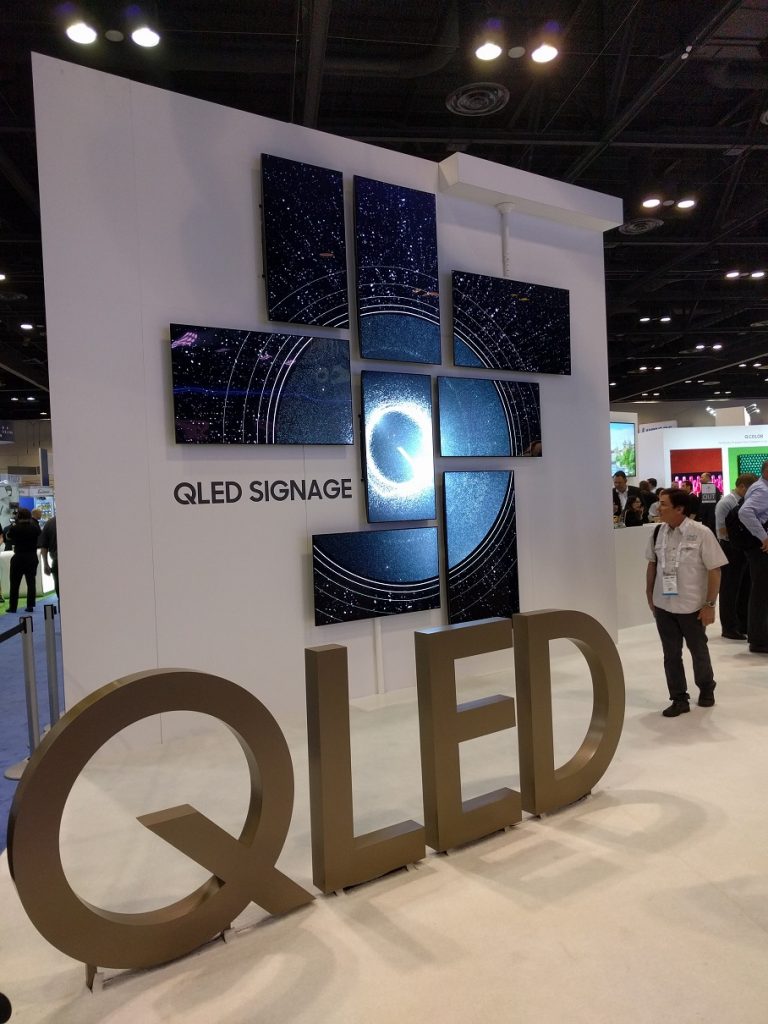
The existence of 2 different monitor dimensions means they can be arranged in more random and creative ways to suit the signage applications.

